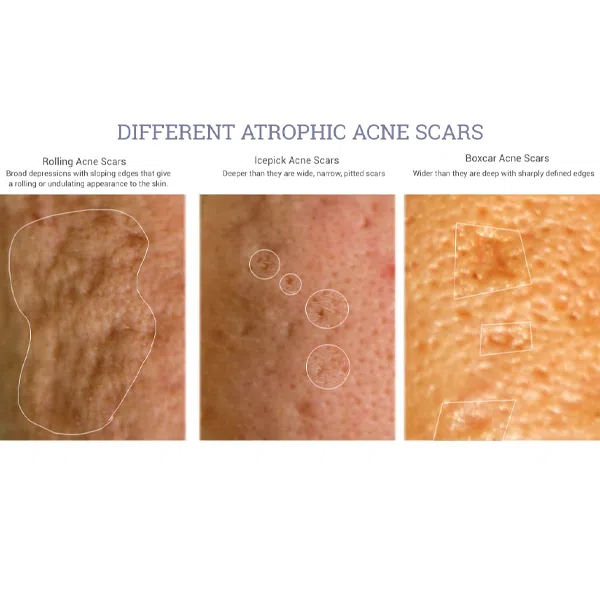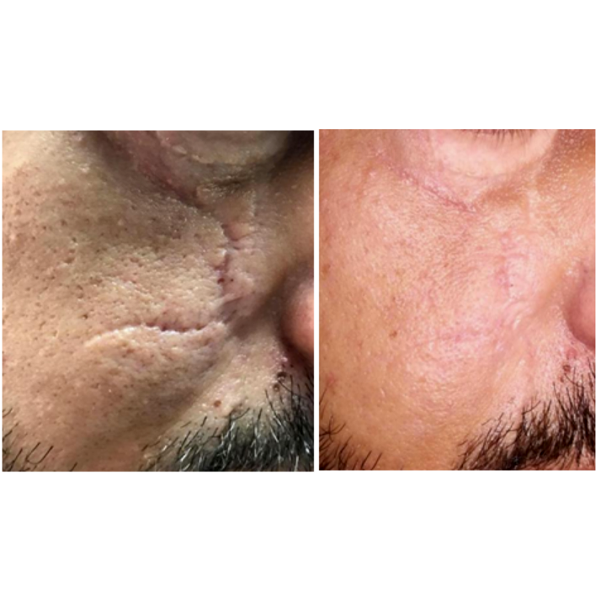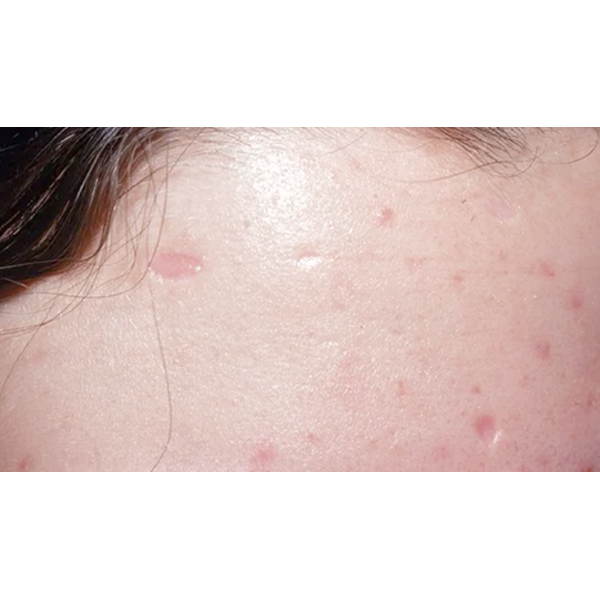Atrophic Acne Scars Classification in Edmonton
Atrophic scars are depressions in the skin caused by the loss of collagen and tissue. Unlike raised scars, they create an indented appearance, often forming after severe acne, infections, or injuries. These scars can be challenging to manage and may impact self-confidence.
Understanding their causes and types is essential for preventing and minimizing their appearance. While Acne scars treatments exist, the best approach is to focus on prevention and early skin care to reduce the risk of atrophic scarring.
Why Choose Albany Cosmetic & Laser Centre?



Our clinic combines advanced technology with extensive experience in scar revision. We offer state‑of‑the‑art lasers, radiofrequency microneedling, subcision and chemical reconstruction techniques tailored to each scar type. Our medical staff are highly trained and emphasise patient comfort and safety. We also provide comprehensive follow‑up care to ensure the best possible outcomes.
Atrophic Scar Treatment Summary
Cost & Pricing
What To Expect
Mechanism of Action
Benefits & Results
Post-Treatment Care
Side Effects & Downtime
What Are Atrophic Acne Scars?
Atrophic scars develop when inflammation destroys collagen and fat beneath a breakout. Because there isn’t enough collagen to fill the area, the skin heals with an indentation. Atrophic scars are much more common than raised scars, and researchers note that they affect roughly three times as many patients as hypertrophic or keloid scars【992593212246963†L300-L312】. Doctors further subdivide atrophic scars into three distinct patterns—ice pick, boxcar and rolling—based on their shape and depth【992593212246963†L325-L343】.
Ice Pick Scars
Ice pick scars are small but deep, resembling a tiny puncture wound. They usually measure less than two millimetres across and taper to a sharp V‑shaped point【992593212246963†L325-L344】. These scars often form after a cyst or deep inflammatory lesion ruptures and destroys surrounding tissue. Because they extend deep into the dermis, they can be challenging to treat and typically require targeted procedures such as TCA CROSS chemical peels, punch excision or fractional laser resurfacing. Ice pick scars are the most common atrophic subtype, accounting for up to 60–70 % of cases【992593212246963†L300-L313】.
Boxcar Scars
Boxcar scars are round or oval depressions with sharply defined vertical walls. They are wider than ice pick scars and can be shallow or deep【992593212246963†L325-L350】. Boxcar scars often resemble chicken‑pox marks and may have a broad base that is wider than the depth of the scar. Treatments for boxcar scars include punch elevation, fractional laser resurfacing, dermal fillers and microneedling combined with radiofrequency. Boxcar scars account for roughly one‑quarter of all atrophic scars【992593212246963†L300-L313】.
Rolling Scars
Rolling scars occur when bands of fibrous tissue tether the skin to deeper structures, creating a wave‑like or undulating appearance. These scars are usually wider than four millimetres and have sloping edges rather than sharp vertical walls【992593212246963†L331-L368】. Because the underlying tethering pulls the skin down, rolling scars are often treated with subcision (cutting the fibrous bands) and then enhanced with fillers, microneedling or laser therapy. Rolling scars make up approximately 15–25 % of atrophic scars【992593212246963†L300-L313】.
What Can Atrophic Scar Treatments Address?
Atrophic scar therapies improve the appearance of indented acne scars on the cheeks, temples, jawline, and forehead. They also help refine enlarged pores, soften textural irregularities and reduce post‑inflammatory discoloration. By stimulating collagen and breaking up fibrous bands, treatments can restore smoother contours and a more even complexion.
The Atrophic Acne Scar Procedure at Albany Cosmetic & Laser Centre
During your consultation we evaluate the type, depth and location of your scars. Our team then develops a personalised plan using one or more modalities such as fractional CO2 laser resurfacing, microneedling with radiofrequency, subcision, chemical peels, dermal fillers or TCA CROSS. Combining treatments often yields the best results because each scar subtype responds differently. Procedures are performed in our clinic under local anaesthetic or topical numbing, with little downtime for most patients.
Preparation
To prepare for atrophic scar treatments, avoid blood‑thinning medications (aspirin, ibuprofen, vitamin E) and supplements for at least a week. Discontinue retinoids, benzoyl peroxide and harsh exfoliants three to five days prior to your appointment. Arrive with clean skin free of makeup or lotions, and protect treated areas from sun exposure and tanning beds. Let our team know about any active breakouts, medical conditions or medications so we can adjust your plan accordingly.
Before & After Results
Results vary depending on the type and severity of your scars. Many patients see an improvement in skin smoothness and a reduction in scar depth within a few weeks of their first session, with continued improvements as collagen remodels over months. We recommend photographing your skin before treatment and after each session to track progress. Realistic expectations are important—while scars won’t disappear completely, the goal is to achieve a noticeable improvement in texture and confidence.
Aftercare Tips
After treatment, follow the care plan we provide. This may include applying a gentle cleanser and moisturiser, using cold compresses to reduce swelling, and avoiding intense exercise, saunas or hot baths for 24–48 hours. Protect your skin with broad‑spectrum sunscreen (SPF 30 or higher) and avoid picking or scratching at any crusts that form. Keep the area clean and moisturised, and avoid retinoids or exfoliating acids until the skin has healed.
Frequently Asked Questions
Are atrophic scars permanent?
Why do some people develop atrophic scars while others don’t?
Can moisturizing prevent atrophic scars?
Are some areas of the body more prone to atrophic scars?
Can these scars worsen over time?
Can atrophic scars be prevented completely?
Request Your Appointment Today
Most side effects are temporary and mild. You may experience redness, swelling, mild bruising or peeling for a few days. More intensive procedures like fractional laser resurfacing can cause crusting or temporary darkening that clears as the skin heals. Rare complications include infection or changes in pigmentation; following our aftercare instructions helps minimise these risks.
Read our privacy policy here